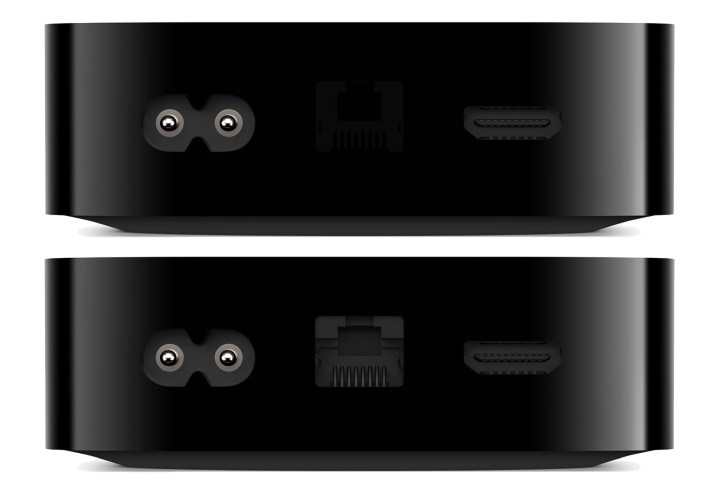Apple has announced two new versions of the Apple TV 4K. Both are good for all kinds of reasons. Better internals. New features. And prices that are much more likely to be competitive, even if they’re still a good bit north of what folks are spending on the likes of Roku and Amazon Fire TV devices.
But two new Apple TV 4K boxes — and the death of the lower-resolution Apple TV HD — means you’ve got a decision to make. Which Apple TV 4K is right for you?
We’ll just go ahead and cut to the chase: Spend the extra $20 and get the more expensive model. Here’s why:

Better bandwidth
When it comes to connected devices at home — especially if it’s something that’s going to be moving large amounts of data — plugged in is always better than wireless. That’s not to say that you can’t get good wireless speed on an Apple TV 4K. You most certainly can. But wired is almost always more stable and faster, and that means you’ve all but removed speed and stability as variables when it comes to troubleshooting.
In other words, Ethernet means not having to say you’re sorry. If you know you’re going to put an Apple TV 4K in a place that has an Ethernet cable, go ahead and use it. That’s worth the extra $20.
More storage
There’s an adage when it comes to onboard storage: You can never have enough. And Apple TV (unlike other devices of this ilk) doesn’t give you the option to add any sort of external storage. So what you buy is what you get.
Do you actually need 128GB of storage on an Apple TV 4K? It’s easy to argue that you do not. It’s not the sort of product that you’ll need to download a huge amount of data so you can watch shows and movies offline since it’s not the sort of thing you’ll be using without an internet connection. On the other hand, when was the last time you ever saw a software update come back smaller than the one before it? So more storage makes sense there.
You’ve got two options here — 64GB with the Wi-Fi-only model and 128GB with the $20 upgrade. From a pure math standpoint, you get a better gigabyte-per-dollar ratio from the $150 model with twice the storage. That in and of itself just makes sense.
And at the end of the day, you’re talking just a 15% premium for a little future-proofing. Spend that Hamilton.

Better network support
This part admittedly is pretty nerdy. And if you don’t care about things like Thread and Matter — which aren’t the same thing but are very much part of the same universe when it comes to smart home devices — then just go ahead and move on.
But here’s the deal: The slightly more expensive Apple TV 4K with more storage and Ethernet also has support for Thread, which is a mesh networking protocol for Internet of Things (IoT) devices. It allows things to talk to each other quickly and easily. And Matter — the latest in a long line of smart home standards, but one that might finally work — utilizes Thread.
So if you know you’re going to use your Apple TV 4K as a smart home hub, go ahead and spend the extra $20 and get the one that supports Thread.
More on Apple TV
What about Apple TV HD?
Now that there are two Apple TV 4K models at $130 and $150 — and it’s worth noting that these are retail prices before any sales go into effect — there’s really no place for a device that costs the same but does less. Apple TV HD was limited to 1080p resolution.
And so Apple TV HD is no more. It’s Apple TV 4K or nothing.
Which Apple TV should you buy?
This one isn’t quite a no-brainer. You can make all kinds of arguments for saving $20 and just getting the Wi-Fi-only model of the Apple TV 4K, and nobody should give you too hard a time for that decision.
But things like Ethernet and more storage can’t be added in after the fact. (Not with Apple TV, anyway.) And since you’re already spending at least $130, it’s not a far stretch to tack on another $20 for some future-proofing.
And for those reasons alone — never mind the Thread support — we’d just go ahead and get the more expensive Apple TV 4K.



